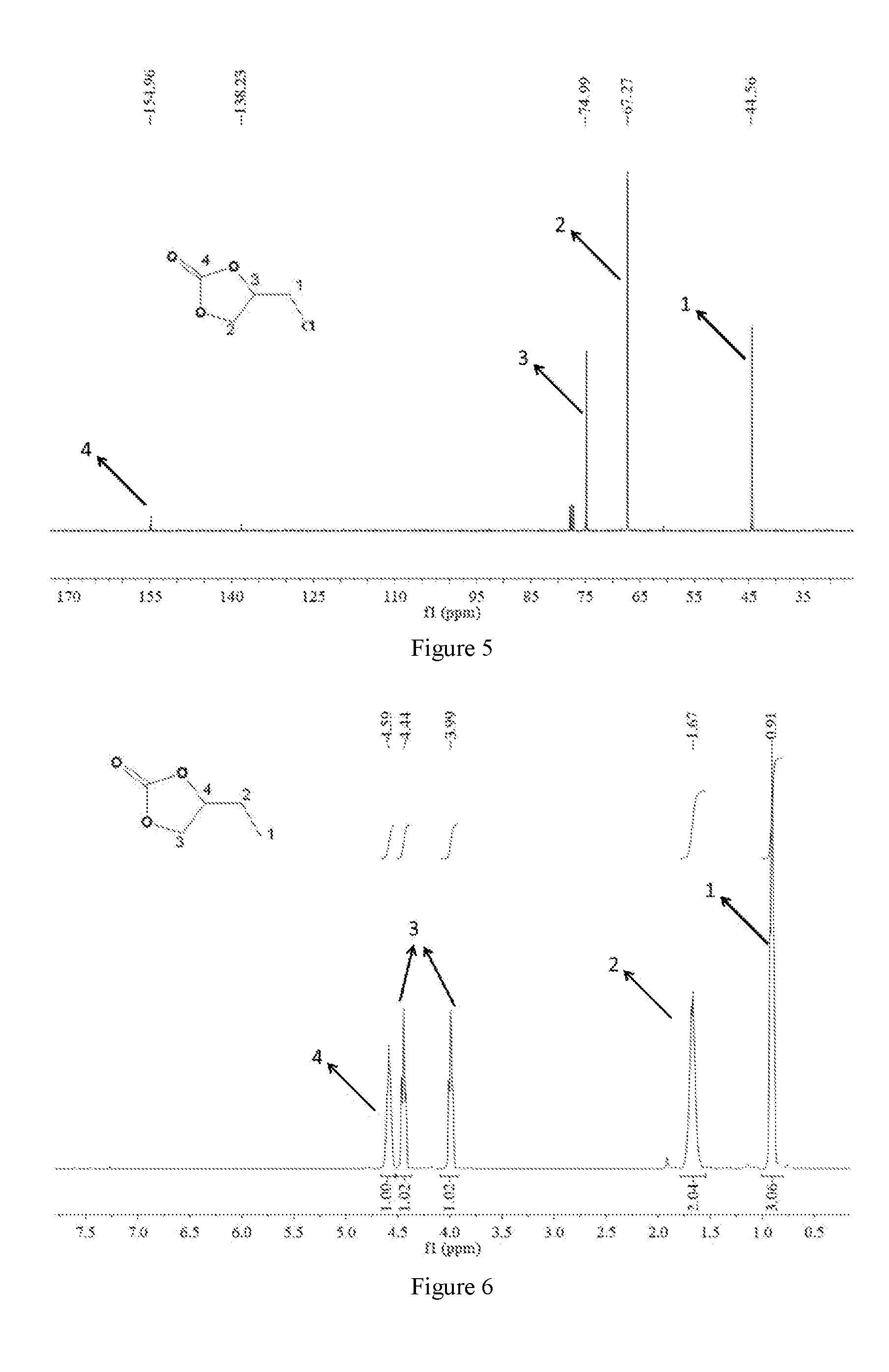Metal-conjugated microporous polymers
a technology of metal-conjugated microporous polymers and polymers, which is applied in the direction of organic compounds/hydrides/coordination complexes, physical/chemical process catalysts, organic chemistry, etc., can solve the problems of low utilization efficiency, frequent occurrence of disastrous weather, and global warming, and achieve the effect of speeding up the production of cyclic carbona
- Summary
- Abstract
- Description
- Claims
- Application Information
AI Technical Summary
Benefits of technology
Problems solved by technology
Method used
Image
Examples
example 1
[0069]1. Synthesis of Salen-Co: A solution of Co(OAc)2 (1 mmol) in CH3OH (10 ml) was added to a solution of the Salen (0.75 mmol) in 10 mL anhydrous toluene (10 ml) via a syringe. The reaction mixture was refluxed for 5 hours at 80° C., yielding the target Salen-Co;
[0070]2. Synthesis of Salen-Co-OAc: The acetic acid (6.5 mmol) was added to a solution of the Salen-Co (0.65 mmol) in toluene (6 ml) and CH2Cl2 (18 ml) via a syringe under argon. The mixture was stirred for 5 hours at 25° C., yielding the target Salen-Co-OAc, and its NMR spectrum was shown in FIG. 2.
[0071]3. Synthesis of CMP-1-1: Salen-Co-OAc (0.45 mmol), 1,3,5-triethynylbenzene (1.35 mmol), copper(I) iodide (40 mg) and tetrakis-(triphenylphosphine)palladium(0) (80 mg) were dissolved in a mixture of toluene (15 ml) and triethylamine (5 ml). Then the reaction mixture was refluxed at 85° C. for 72 hours. After post-processing, CMP-1-1 was obtained. The FT-IR spectra and the Solid-state NMR spectra of the CMP-1-1 were shown ...
example 2
[0075]1. Synthesis of Salen-Co: A solution of Co(OAc)2 (1 mmol) in CH3OH (10 ml) was added to a solution of the Salen (0.6 mmol) anhydrous toluene (10 ml) via a syringe. Then the reaction mixture was refluxed for 5 hours at 80° C., yielding the target Salen-Co;
[0076]2. Synthesis of Salen-Co-OAc: The acetic acid (5 mmol) was added to a solution of the Salen-Co (0.5 mmol) in toluene (5 ml) and CH2Cl2 (15 ml) via a syringe under argon. Then the mixture was stirred for 5 hours at 25° C., yielding the target Salen-Co-OAc, and the NMR spectrum was shown in FIG. 2.
[0077]3. Synthesis of CMP-1-1: Salen-Co-OAc (0.6 mmol), 1,3,5-triethynylbenzene (2.4 mmol), copper(I) iodide (60 mg) and tetrakis-(triphenylphosphine)palladium(0) (100 mg) were dissolved in a mixture of toluene (16 ml) and triethylamine (6 ml). Then the reaction mixture was refluxed at 85° C. for 72 hours. After post-processing, CMP-1-1 was obtained. The FT-IR spectra and the Solid-state NMR spectra of the CMP-1-1 were shown in F...
example 3
[0083]1. Synthesis of Salen-Co: A solution of Co(OAc)2 (1 mmol) in CH3OH (8 ml) was added to a solution of the Salen (0.5 mmol) in 8 mL anhydrous toluene (10 ml) via a syringe. The reaction mixture was refluxed for 5 hours at 80° C., yielding the target Salen-Co;
[0084]2. Synthesis of Salen-Co-OAc: The acetic acid (9 mmol) was added to a solution of Salen-Co (0.65 mmol) in toluene (5 ml) and CH2Cl2 (15 ml) via a syringe under argon. The mixture was stirred for 6 hours at 25° C., yielding the target Salen-Co-OAc, and the NMR spectrum was shown in FIG. 2.
[0085]3. Synthesis of CMP-1-1: Salen-Co-OAc (0.6 mmol), 1,3,5-triethynylbenzene (2.0 mmol), copper(I) iodide (50 mg) and tetrakis-(triphenylphosphine)palladium(0) (100 mg) were dissolved in a mixture of toluene (16 ml) and triethylamine (5 ml). Then the reaction mixture was refluxed at 85° C. for 72 hours. After post-processing, CMP-1-1 was obtained. The FT-IR spectra and the Solid-state NMR spectra of the CMP-1-1 were shown in FIG. 12...
PUM
| Property | Measurement | Unit |
|---|---|---|
| pressure | aaaaa | aaaaa |
| reaction temperature | aaaaa | aaaaa |
| yield | aaaaa | aaaaa |
Abstract
Description
Claims
Application Information
 Login to View More
Login to View More - R&D
- Intellectual Property
- Life Sciences
- Materials
- Tech Scout
- Unparalleled Data Quality
- Higher Quality Content
- 60% Fewer Hallucinations
Browse by: Latest US Patents, China's latest patents, Technical Efficacy Thesaurus, Application Domain, Technology Topic, Popular Technical Reports.
© 2025 PatSnap. All rights reserved.Legal|Privacy policy|Modern Slavery Act Transparency Statement|Sitemap|About US| Contact US: help@patsnap.com



